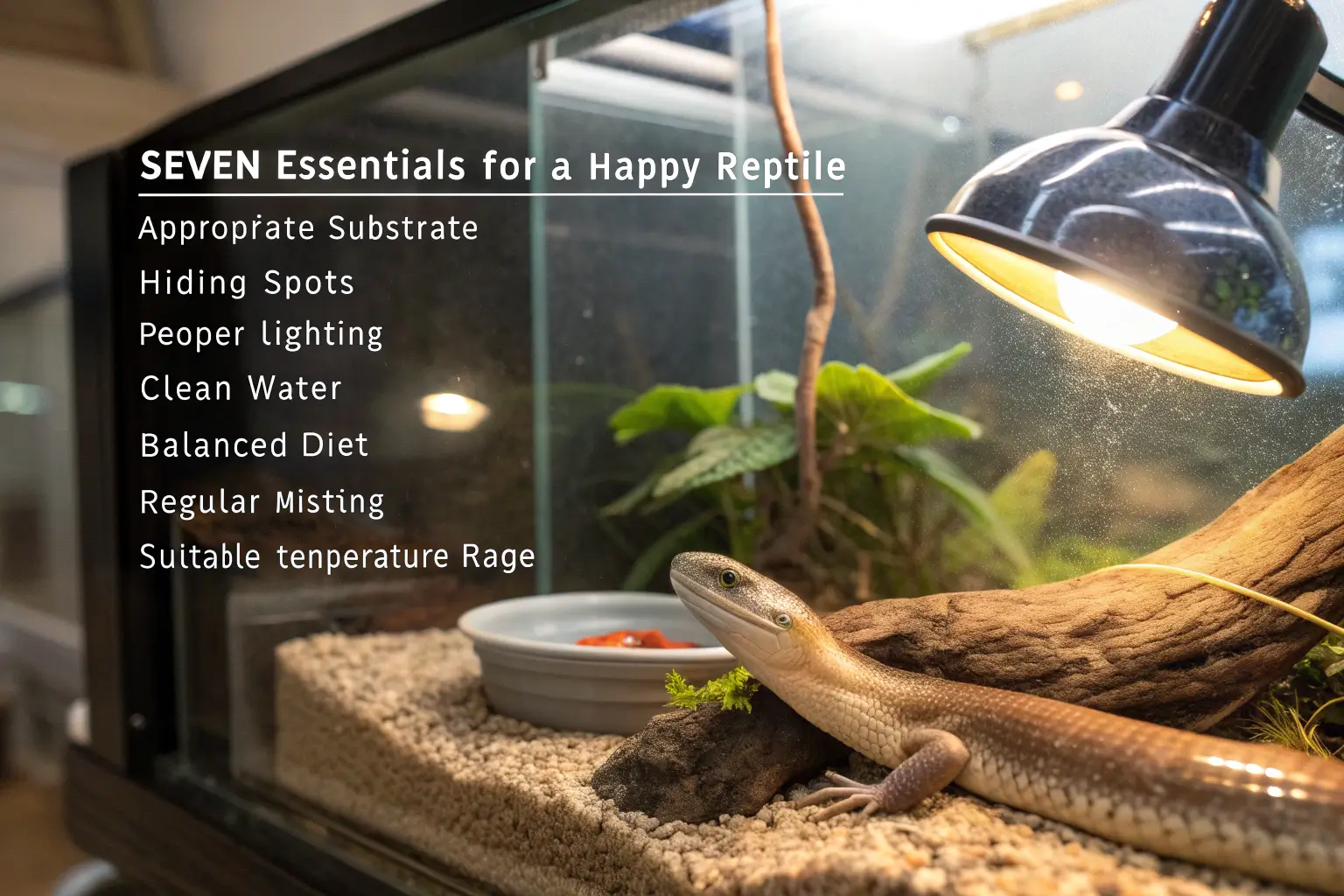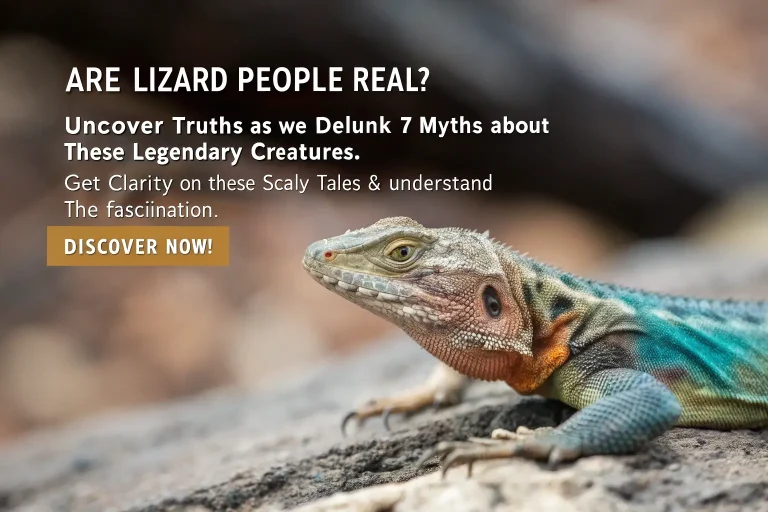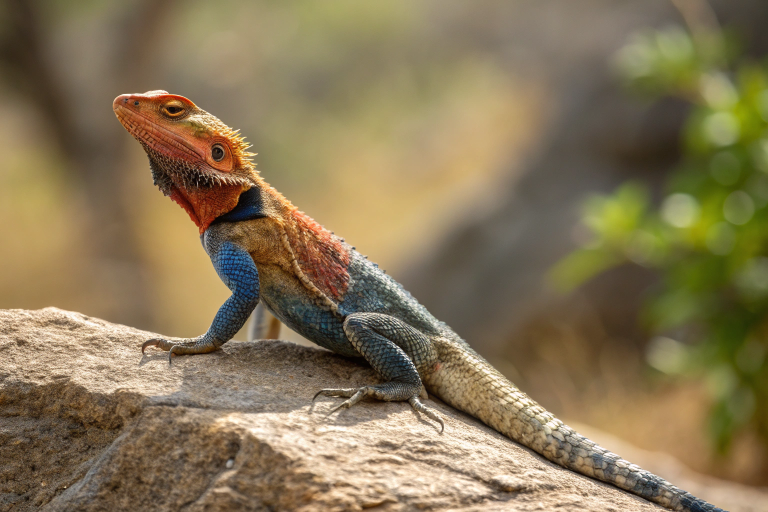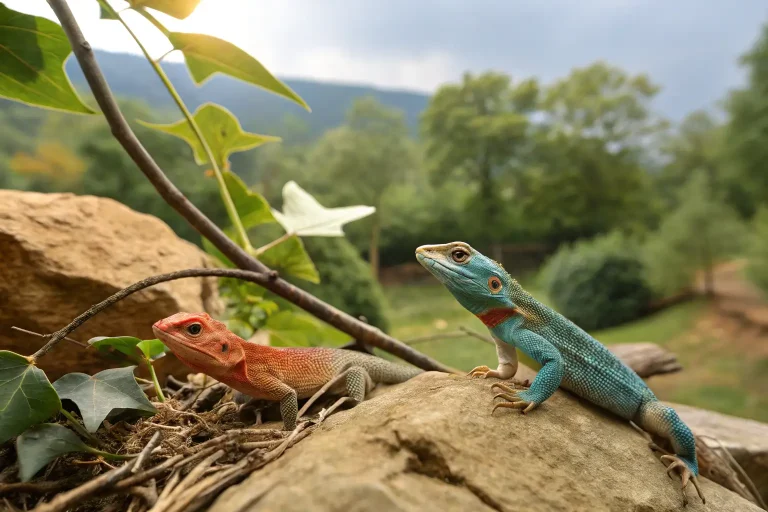Legless Lizard Care: 7 Essentials for a Happy Reptile
Legless Lizard Care: 7 Essentials for a Happy Reptile Are you puzzled about the care for your legless lizard? Uncover 7 essential tips to ensure your scaly friend thrives. Perfect for beginners! Discover more.
Introduction
When you first encounter a legless lizard, it’s easy to mistake it for a snake. These fascinating reptiles have evolved to lose their limbs, creating a sleek, serpentine appearance that belies their true lizard nature. Despite their snake-like appearance, legless lizards are unique creatures with specific care requirements that differ significantly from both snakes and typical lizards.
Understanding proper legless lizard care is crucial for these specialized reptiles to thrive in captivity. These remarkable animals have adapted to specific ecological niches over millions of years, and recreating these conditions in captivity requires knowledge, attention to detail, and dedication.
Here’s something that might surprise you: unlike snakes, legless lizards have movable eyelids and external ear openings! This is just one of the fascinating distinctions that make these animals such intriguing pets for reptile enthusiasts. Whether you’re a seasoned herpetoculturist or considering your first reptilian companion, proper legless lizard care will ensure your unique pet lives a long, healthy life.
Species Overview
Scientific Name: Anguidae Family, Various Genera
The term “legless lizard” encompasses several species across multiple families, with the most common in captivity belonging to the Anguidae family. Notable genera include Ophisaurus (glass lizards), Pseudopus (European legless lizards), and Anniella (California legless lizards).
Physical Characteristics
Legless lizards typically range from 10 to 40 inches in length, depending on the species. Their coloration varies widely, from the iridescent blue-spotted Eastern glass lizard (Ophisaurus ventralis) to the bronze-hued European legless lizard (Pseudopus apodus). Most species display subtle patterns of stripes or spots that provide camouflage in their natural environments.
Unlike snakes, legless lizards possess several distinctive features: external ear openings, movable eyelids, and many species have a lateral groove running down each side of their body. Perhaps their most remarkable adaptation is their fragile tail, which can detach when threatened—a defensive mechanism called autotomy that gives glass lizards their common name.
Subspecies
The Ophisaurus genus contains several subspecies found throughout North America and Asia. European legless lizards (Pseudopus apodus) are divided into two recognized subspecies: P. a. apodus from southeastern Europe and P. a. thracius from western Asia. California legless lizards (Anniella) have recently been reclassified into five distinct species based on genetic studies, each adapted to specific California habitats.
Habitat and Distribution
Natural Habitat
In the wild, legless lizards inhabit a diverse range of ecosystems. Many species prefer environments with loose soil, leaf litter, or sandy substrates where they can burrow efficiently. They thrive in grasslands, open woodlands, and scrubby areas with moderate ground cover. Unlike some reptiles that bask openly, legless lizards typically practice cryptic thermoregulation, warming themselves while remaining hidden beneath surface debris.
Geographic Range
These fascinating reptiles have a widespread distribution. Glass lizards (Ophisaurus) can be found throughout the southeastern United States, parts of the Midwest, and extending into Mexico. The European legless lizard ranges from the Balkans through the Middle East and into Central Asia. California legless lizards are endemic to California and Baja California, while other species occupy niches across Australia, Africa, and Asia.
Adaptations
Legless lizards have evolved remarkable adaptations for their fossorial (burrowing) lifestyle. Their streamlined body shape allows efficient movement through substrate, while reinforced scales provide protection during burrowing. Many species have developed specialized jaw structures for capturing prey in confined spaces and sensory adaptations that allow them to detect vibrations through the soil—essential for locating both prey and predators while underground.
Diet and Feeding Habits
What It Eats
Proper legless lizard care begins with understanding their dietary needs. In captivity and the wild, these reptiles are primarily insectivorous, consuming a variety of arthropods including crickets, mealworms, waxworms, and other invertebrates. Larger species like the European legless lizard may also consume small vertebrates such as newborn mice, small lizards, or even nestling birds. Some species supplement their diet with plant matter, including berries, fruits, and vegetables.
Hunting or Foraging Behavior
Legless lizards are generally active hunters that use a combination of vision, chemical sensing, and vibration detection to locate prey. Unlike snakes, which typically strike and swallow prey whole, legless lizards have stronger jaws that can crush insect exoskeletons. They often forage during dawn and dusk hours, moving through leaf litter or loose soil in search of food. Some species will even climb into low vegetation to hunt.
Dietary Needs
In captivity, a diverse diet is essential for proper legless lizard care. A feeding schedule of 2-3 times weekly is appropriate for adults, with juveniles requiring more frequent meals. Nutritional supplementation is crucial, particularly calcium and vitamin D3 to prevent metabolic bone disease. Dusting prey items with appropriate supplements provides these essential nutrients. Access to fresh water is also vital, though many legless lizards obtain much of their hydration from their food.
Behavior and Social Structure
Social Behavior
Legless lizards are primarily solitary animals that come together mainly for breeding purposes. In captivity, they generally should be housed individually to prevent stress and potential aggression, particularly between males. However, some species display limited social tolerance, with overlapping territories observed in the wild where resources are abundant.
Communication
Though not highly vocal, legless lizards communicate through a combination of chemical signals, body posturing, and physical interactions. They possess well-developed chemical sensory abilities, using their tongue to sample environmental cues much like snakes do, though their tongue-flicking behavior is typically less pronounced. During breeding seasons, males may engage in combat rituals that involve intertwining and wrestling to establish dominance.
Mating and Reproduction
Reproduction varies by species, with some legless lizards being oviparous (egg-laying) while others are viviparous (live-bearing). Breeding typically occurs in spring following emergence from brumation (a reptilian form of hibernation). European legless lizards, for instance, give birth to 5-15 live young after a gestation period of approximately 4 months. Glass lizards, by contrast, lay clutches of 5-20 eggs that hatch after 1-2 months of incubation. In captivity, successful breeding requires proper temperature cycling, adequate nutrition, and careful habitat management.
Conservation Status
Endangerment Level
Conservation status varies significantly among legless lizard species. The European legless lizard is listed as Least Concern on the IUCN Red List due to its wide distribution, while several California legless lizard species are considered Species of Special Concern by California Department of Fish and Wildlife. Some species face more significant challenges—the Endangered Species Act protects the federally threatened San Francisco legless lizard (Anniella pulchra).
Threats
Habitat destruction represents the greatest threat to legless lizard populations worldwide. Agricultural development, urbanization, and infrastructure projects eliminate or fragment suitable habitat. Because these reptiles have specific substrate requirements and limited mobility, they cannot easily relocate when habitats are destroyed. Additionally, introduced predators such as domestic cats, invasive fire ants, and non-native mammals take a significant toll on populations. Climate change poses an emerging threat by altering temperature regimes crucial for these reptiles’ activity cycles and reproduction.
Conservation Efforts
Several conservation initiatives focus on legless lizard protection. These include habitat preservation projects, captive breeding programs for threatened species, and legal protections that limit collection from the wild. Research efforts to better understand population dynamics and habitat requirements inform conservation strategies. For the reptile keeper, supporting sustainable captive breeding programs and avoiding collection of wild specimens contributes to conservation efforts.
Interesting Facts
Legless lizards have evolved their limbless body form independently from snakes, representing a fascinating case of convergent evolution. Despite their similar appearances, they diverged from snakes more than 100 million years ago.
Unlike snakes, which lost their limbs completely, some legless lizard species retain vestigial hind limb bones, visible as tiny spurs in certain specimens. This evolutionary remnant provides clues to their developmental history.
Their remarkable tail regeneration capabilities are impressive, though regenerated tails lack the vertebrae of the original, consisting instead of cartilage. A fully regenerated tail may look slightly different in pattern and texture from the original.
Glass lizards earned their common name from their extreme tail fragility. When threatened, their tail can break into several pieces that continue to wriggle, distracting predators while the lizard escapes. This defense mechanism comes at a cost—significant energy is required to regenerate the lost tail.
Some legless lizard species have incredibly long lifespans for reptiles of their size, with the European legless lizard known to live over 50 years in captivity with proper care!
Tips for Caring for the Animal
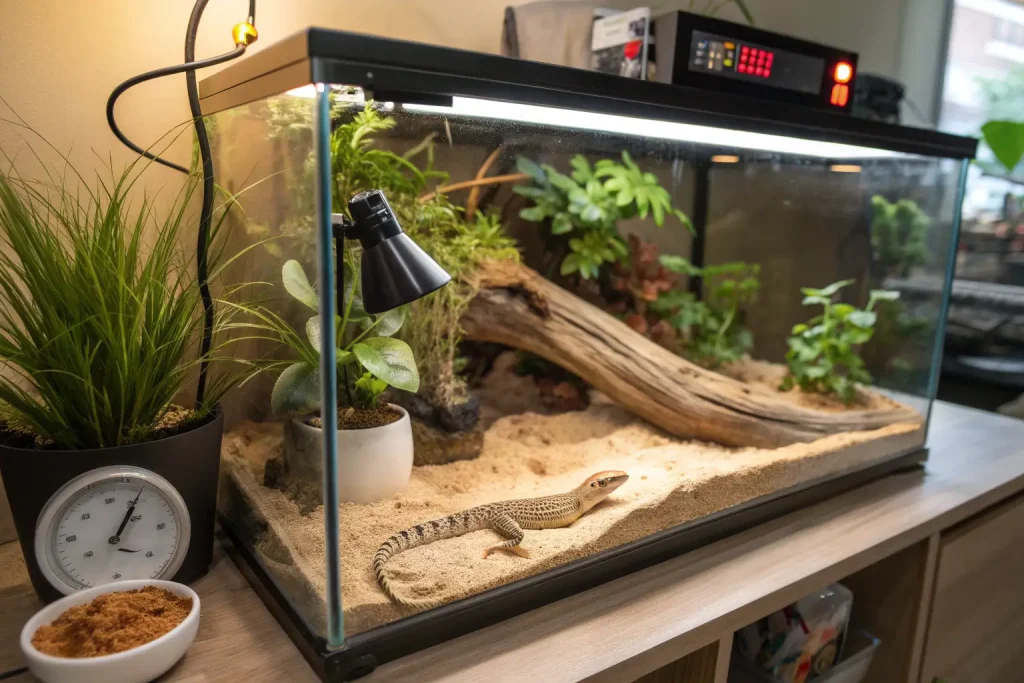
1. Proper Enclosure Setup
For successful legless lizard care, the enclosure must mimic their natural burrowing habitat. A 20-30 gallon terrarium provides adequate space for most species, with larger species like the European legless lizard requiring correspondingly larger habitats. Substrate depth is crucial—provide at least 3-4 inches of appropriate burrowing material such as a mixture of coconut coir, clean topsoil, and play sand.
Incorporate hiding spots throughout the enclosure using cork bark, flat rocks, and artificial caves. Live or artificial plants add security and environmental enrichment. A secure, well-ventilated lid is essential as these reptiles are surprisingly strong and can push open loose-fitting tops.
2. Temperature and Lighting Requirements
Creating a proper thermal gradient is essential for legless lizard care. Maintain a warm side around 85-90°F (29-32°C) and a cooler side around 75-80°F (24-27°C). Nighttime temperatures can drop to 70-75°F (21-24°C). Provide heat using under-tank heaters regulated by a thermostat rather than overhead heat lamps, as these burrowing reptiles primarily absorb heat through contact with warm substrate.
UVB lighting benefits most legless lizard species, helping with vitamin D3 synthesis and calcium metabolism. A low-output UVB bulb is generally sufficient, positioned according to manufacturer guidelines. Maintain a regular 12-14 hour light cycle, adjusting seasonally if attempting breeding.
3. Humidity and Hydration Management
Proper moisture levels are crucial for successful legless lizard care. Maintain humidity between 40-60% for most species, with slight variations based on specific requirements. Mist the enclosure lightly 1-2 times weekly, and provide a small, shallow water dish that should be cleaned and refreshed daily.
Create a humidity gradient by keeping one portion of the substrate slightly moister than the rest. This allows the animal to self-regulate its hydration needs. Monitor for proper shedding—difficulty shedding often indicates insufficient humidity.
4. Nutritional Needs and Feeding Schedule
Offer a varied diet of appropriately-sized prey items. Crickets, mealworms, and roaches form the dietary foundation, supplemented occasionally with silkworms or waxworms as treats. For larger species, pinky mice may be offered monthly. Gut-load prey 24 hours before feeding to increase nutritional value.
Dust prey items with calcium supplement twice weekly and a multivitamin once weekly. Feed adult specimens every 3-4 days, with juveniles requiring more frequent feeding every 1-2 days. Remove uneaten prey items after 24 hours to prevent stress and potential injury to your legless lizard.
5. Handling Techniques and Socialization
Legless lizards generally tolerate gentle handling but prefer minimal contact. When handling is necessary, support the entire body length and avoid grasping the tail, which may detach. Approach from below rather than above to prevent triggering predator-avoidance responses.
Limit handling sessions to 5-10 minutes, particularly while your pet is acclimating to its new environment. Never handle immediately after feeding, as this can cause regurgitation and stress. Some individuals may become more accepting of handling over time, but respect that these are primarily observational pets.
6. Health Monitoring and Common Issues
Regular health assessment is vital for proper legless lizard care. Watch for normal behaviors like active foraging, proper shedding, and regular fecal output. Signs of illness include lethargy, weight loss, irregular shedding, respiratory difficulties, or abnormal feces.
Common health issues include parasitic infections, respiratory infections, and metabolic bone disease. Maintain quarantine protocols when introducing new animals, and sanitize hands before and after handling to prevent disease transmission. Establish a relationship with a reptile-experienced veterinarian before health issues arise.
7. Environmental Enrichment and Mental Stimulation
Though not highly active, legless lizards benefit from environmental complexity. Rearrange enclosure elements periodically to provide novelty and stimulation. Incorporating varying substrate depths, tunnels, and different textures enhances natural behaviors.
Feeding strategies can provide enrichment—occasionally scatter food throughout the enclosure to encourage foraging behavior. Some keepers have success with puzzle feeders designed for reptiles that make obtaining food more engaging and mentally stimulating.
Role in the Ecosystem
Ecological Importance
Legless lizards serve as important mesopredators in their native ecosystems, controlling populations of insects and other invertebrates that might otherwise reach pest levels. Their burrowing activities contribute to soil aeration and nutrient cycling, improving soil health and plant growth.
As both predators and prey, they occupy a critical middle position in food webs. While they consume numerous invertebrates, they also provide food for larger predators like birds of prey, mammalian carnivores, and larger reptiles, helping to transfer energy through trophic levels.
Impact of Decline
The decline of legless lizard populations can trigger cascading effects throughout their ecosystems. Reduced predation pressure may allow certain insect populations to increase dramatically, potentially damaging vegetation and disrupting pollination processes.
Their loss also impacts predator populations that rely on them as food sources, potentially forcing these animals to target alternative prey and altering established ecological relationships. Additionally, the reduction in soil aeration from their burrowing activities can affect plant communities’ health and composition, particularly in systems where these reptiles occur in high densities.
Conclusion
Legless lizard care represents a fascinating journey into specialized reptile husbandry. These remarkable animals, with their unique evolutionary history and specialized adaptations, offer reptile enthusiasts an opportunity to observe behaviors rarely seen in other captive reptiles. From their surprising defensive mechanisms to their specialized feeding techniques, legless lizards continue to intrigue both scientists and pet keepers alike.
By providing the essential care elements outlined—proper enclosure design, thermal gradients, humidity management, appropriate diet, careful handling, health monitoring, and environmental enrichment—you’ll create an environment where your legless lizard can thrive. Remember that these animals represent living links to ancient evolutionary processes and deserve our respect and dedicated care.
Whether you’re drawn to the iridescent beauty of glass lizards or the impressive size of the European legless lizard, proper care techniques remain similar. Consider joining herpetological societies or online communities to continue learning and sharing experiences with other legless lizard enthusiasts. By committing to responsible ownership and supporting conservation initiatives, you help ensure these fascinating reptiles will continue to slither through our world for generations to come.
Frequently Asked Questions
How can I tell the difference between a legless lizard and a snake?
Legless lizards have several distinguishing features that separate them from snakes. Look for movable eyelids (snakes have fixed, transparent eye scales), external ear openings (absent in snakes), and the ability to blink. Many legless lizard species also have a lateral groove running down each side of their body. Additionally, legless lizards typically have much longer tails relative to their body length compared to snakes, and they move differently—more rigid and less fluid than a snake’s movement.
Why did my legless lizard’s tail fall off, and will it grow back?
Tail detachment (autotomy) is a natural defense mechanism that occurs when your legless lizard feels threatened or is handled roughly. The tail will regenerate, but the new growth will look different from the original—often darker, smoother, and lacking the original pattern. Full regrowth can take 6-12 months depending on the species, age, and overall health of your pet. During regeneration, provide optimal nutrition and minimize stress to support the energy-intensive regrowth process.
How often should I clean my legless lizard’s enclosure?
Perform spot cleaning (removing waste and soiled substrate) every 2-3 days. Conduct a partial substrate change (about 1/3 of the total) monthly to maintain cleanliness while preserving beneficial microbial communities and scent markings important to your pet’s sense of security. Complete enclosure breakdowns and sterilization should occur every 3-4 months, or immediately if you notice mold, mites, or unusual odors. Always thoroughly clean and disinfect water dishes daily.
Can legless lizards be housed together?
Generally, legless lizards should be housed individually. Most species are solitary by nature and may become stressed or aggressive when forced to share space. Cohabitation risks include competition for resources, stress-induced health problems, and potential injury from confrontations. The rare exceptions might be established breeding pairs of certain species during breeding season, but even this should be carefully monitored by experienced keepers. For most pet owners, separate enclosures are strongly recommended.
What substrate is best for legless lizards?
The ideal substrate for legless lizards is one that retains shape when burrowed into while maintaining appropriate humidity. A mixture of coconut coir, clean topsoil (without pesticides or fertilizers), and play sand in a ratio of approximately 2:1:1 works well for most species. This mixture holds burrows and humidity while allowing natural burrowing behavior. Avoid cedar and pine shavings (toxic to reptiles), pure sand (too abrasive), and purely loose substrates that won’t hold tunnels. Substrate depth should be at least 3-4 inches, with deeper sections if possible.

